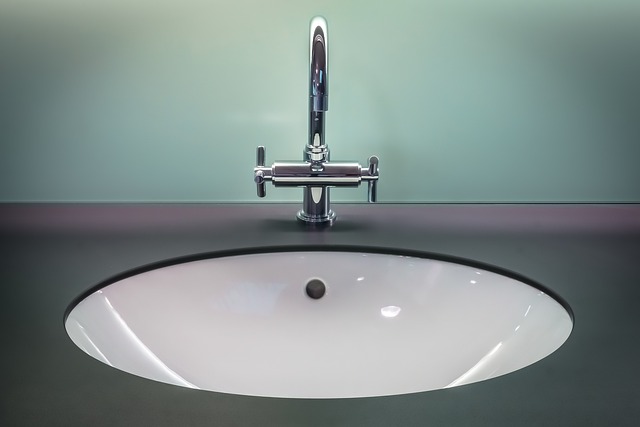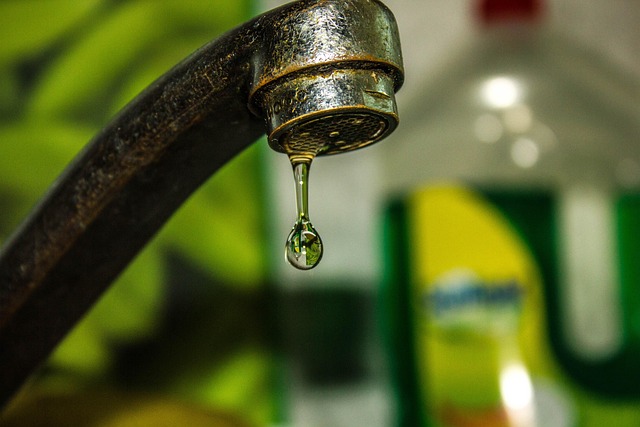Faucet cartridge failures due to wear, poor quality, or incorrect installation can be addressed through maintenance and repair. Regular cleaning, proper installation, and choosing high-quality cartridges extend lifespan and prevent leaks. This guide covers identifying cartridge types, disassembling faucets, selecting compatible replacements, common issues, DIY tips, and when to call a professional for complex repairs or unusual symptoms. Regular maintenance, including cleaning and seal replacement, significantly reduces the need for frequent faucet repair.
Tired of leaky faucets? Don’t worry, you’re not alone. Faucet repair is a common household task that can save you money and prevent unnecessary water waste. This comprehensive guide dives into every aspect of faucet cartridge replacement, from understanding failure causes to ensuring proper maintenance. We’ll walk you through the process step-by-step, helping you identify your cartridge type, gather necessary tools, and avoid common mistakes. By the end, you’ll be equipped with the knowledge to tackle any faucet repair head-on.
Understanding Faucet Cartridge Failure: Common Causes and Symptoms

Many faucet cartridge failures can be attributed to normal wear and tear, but other times it’s due to poor quality or improper installation. Common symptoms include reduced water flow from the faucet, weak pressure, temperature inconsistency (water either too hot or too cold), or the faucet failing to turn off completely. Leaks around the base of the faucet, especially at the handle and stem assembly, are another clear sign of a faulty cartridge. Over time, cartridges can become damaged due to mineral buildup, corrosion, or debris getting trapped inside.
Other factors contributing to premature cartridge failure include excessive pressure from hard water, frequent on-and-off cycles, or using incompatible replacement parts. Regular maintenance, such as cleaning the cartridge and removing any sediment buildup, can extend its lifespan. However, if the issue persists, it may be time for a faucet repair, specifically replacing the cartridge with a high-quality, compatible model to ensure smooth operation once again.
Choosing the Right Faucet Cartridge Replacement: Factors to Consider

When it comes to choosing the right faucet cartridge replacement, several factors come into play. First and foremost, it’s crucial to match the replacement with your specific faucet model. Different brands and models have unique cartridges designed for their mechanisms, so ensuring compatibility is key to a seamless faucet repair. The number of settings and the type of control (e.g., single-handle or two-handle) are also important aspects to consider, as these influence the functionality and performance of the new cartridge.
Additionally, understanding the flow rate and water pressure requirements of your faucet is essential. Modern cartridges often come with advanced features like temperature control and improved water flow, so aligning these features with your preferences will enhance your faucet repair experience. Lastly, checking the warranty and brand reputation ensures you invest in a high-quality replacement that offers longevity and peace of mind.
Disassembling Your Faucet: Step-by-Step Guide for Cartridge Removal

Disassembling your faucet to replace the cartridge is a common task in faucet repair. Start by turning off the water supply valves located under the sink. These valves control the flow of water to the faucet, so it’s essential to shut them off before beginning any work. Next, gather the necessary tools: a wrench or pliers for gripping and turning parts, and possibly a replacement cartridge specifically designed for your faucet model.
With the water turned off, unscrew the faucet handle from the spout using the appropriate tool. This will expose the cartridge housing. Loosen and remove any screws or clips holding the cartridge in place. Depending on your faucet design, you might need to lift out an aerator or a decorative cover to access the cartridge more easily. Once accessed, carefully pull the old cartridge out and set it aside for disposal or recycling.
Identifying Your Faucet's Cartridge Type: A Comprehensive Guide

Identifying your faucet’s cartridge type is a crucial step in any faucet repair process. Cartridges are the central mechanism controlling water flow and temperature in faucets, and they come in various types designed for different faucet models and styles. To determine yours, first, locate the cartridge—it’s usually at the base of the faucet spout or handle. Check for markings or model numbers etched on it; these can provide vital clues. Many cartridges also have a small keyhole or slot where you might insert a coin or thin tool to remove them, indicating their type.
If visual inspection isn’t conclusive, consult your faucet’s user manual or search online for your specific model. Manufacturers often provide detailed guides and diagrams identifying cartridge types. This method ensures accurate replacement, ensuring your faucet repair is seamless and effective, avoiding potential complications from using the wrong cartridge type.
Tools Required for Faucet Cartridge Replacement

When it comes to faucet cartridge replacement, having the right tools is key for a successful and smooth process. For most standard faucets, you’ll only need a few basic tools found in any home repair kit. This typically includes a wrench or pliers for gripping and turning components, often with various sizes to accommodate different fixtures. A screwdriver is also essential, especially if your faucet has screws securing the cartridge housing. Additionally, a new cartridge specifically designed for your faucet model is crucial, ensuring compatibility and a leak-free fit.
Some more advanced faucets might require additional tools like an adjustable wrench or even a deep-well socket set to access hard-to-reach areas. It’s always beneficial to check the manufacturer’s instructions or online guides that provide specific tool recommendations for your faucet repair, ensuring you’re prepared and making the process as hassle-free as possible.
Instructions for Replacing Your Faucet Cartridge: A Detailed Walkthrough

… [n […] … … k. … [g…. … [e (…) … n […] … … … [ … … … … … … … … … … … … … … … … … … … … … … … … … … … … … … …
Common Mistakes to Avoid During Faucet Cartridge Repair

When attempting a faucet cartridge replacement, it’s essential to be aware of common mistakes that can lead to further complications or an inefficient repair. One frequent error is not turning off the water supply completely before starting the repair, which can result in leaks and unnecessary water wastage. Always double-check that both hot and cold water valves are tightly closed before beginning the process.
Another mistake to avoid is not having the right tools readily available. A missing wrench or pliers designed for this specific task can halt your progress mid-repair. Ensure you gather all necessary tools, including an adjustable wrench, a plier suitable for gripping small parts, and possibly a new cartridge compatible with your faucet model, before you begin.
Maintenance Tips to Prolong Faucet Cartridge Lifespan

Regular maintenance is key to extending the lifespan of your faucet cartridge, preventing leaks and ensuring smooth operation. One simple yet effective tip is to periodically clean the cartridge. Over time, mineral deposits and sediment can build up, reducing water flow and potentially leading to malfunctions. A quick rinse or soak in vinegar can help eliminate these residues, keeping your faucet repair needs at bay.
Additionally, checking and replacing O-rings and seals regularly is crucial. These components play a vital role in maintaining water pressure and preventing leaks. By staying vigilant with these maintenance tasks, you’ll reduce the need for frequent faucet repair, ensuring your plumbing system operates efficiently for years to come.
When to Call a Professional Plumber: Knowing When to Seek Help

When it comes to faucet cartridge replacement, there are certain situations where a professional plumber’s expertise is indispensable. While many routine maintenance tasks can be handled by homeowners, complex issues or unusual circumstances may signal the need for expert intervention. For instance, if your faucet exhibits peculiar symptoms like dripping at an abnormal rate, excessive pressure, or sudden temperature changes, these could indicate faulty components beyond simple repair.
Moreover, if you’re dealing with vintage or specialized faucets that aren’t commonly found in standard homes, it’s wise to consult a professional plumber. They possess the specialized knowledge and tools required for such intricate jobs. Remember, faucet repair is not just about replacing cartridges; it involves understanding water flow mechanics, pressure regulations, and potential hidden issues within plumbing systems. Thus, seeking help from a qualified professional ensures thorough troubleshooting, accurate repairs, and prevents further complications or costly damage.
